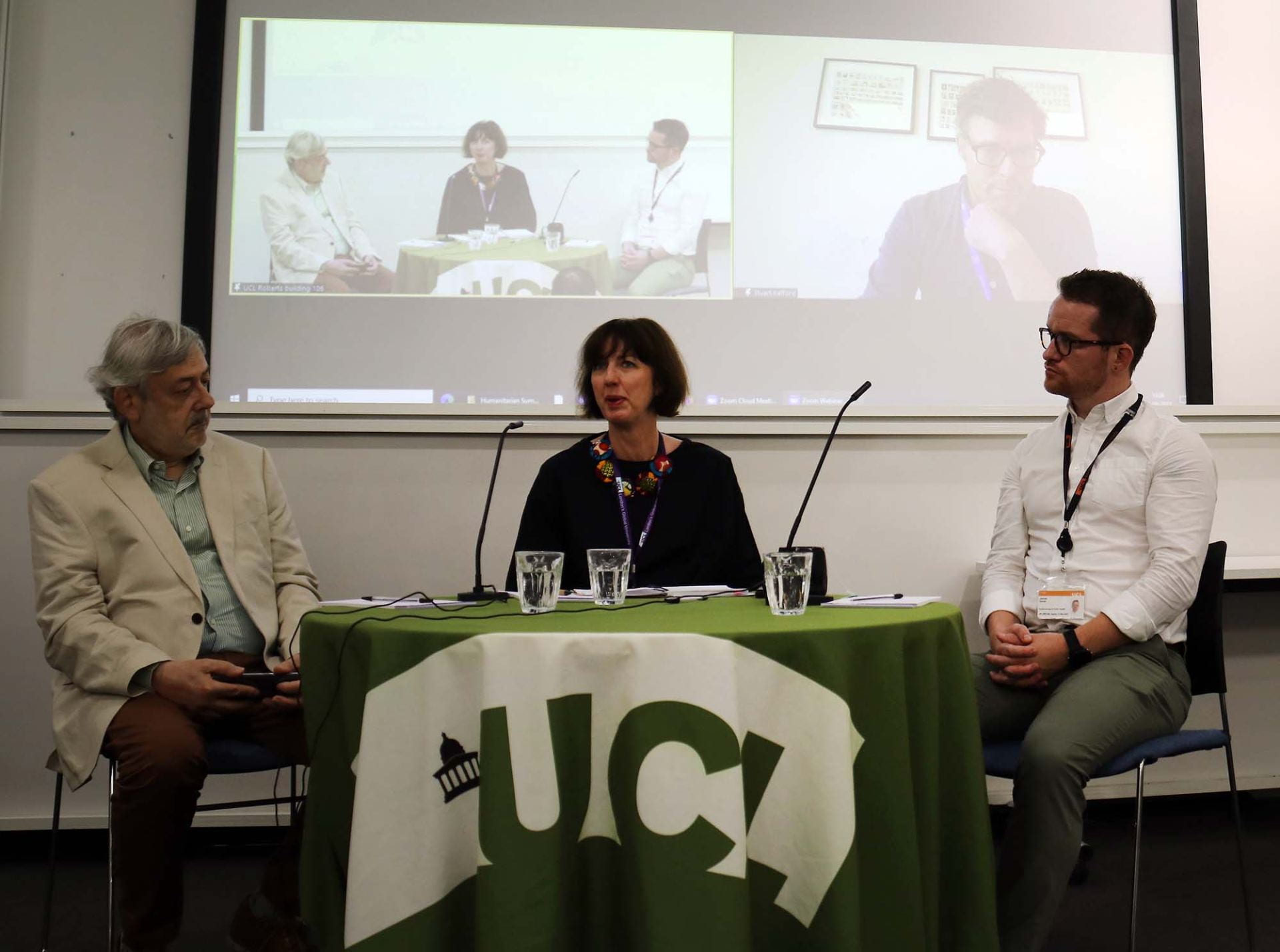Is the Humanitarian Sector Outdated?
By Evie Lunn, on 31 August 2023
Amidst historical levels of displacement and urgent need, the humanitarian sector is struggling to remain afloat. Despite reaching an increasing number of people, the fragmented global aid architecture cannot keep pace with the growing frequency and intensity of suffering globally. Attempts to reform the system have only addressed surface-level issues while leaving fundamental problems unaddressed. Power imbalances, rivalries between organisations, and distorted institutional incentives have remained largely untouched. Is the sector outdated?
In order to survive, humanitarians must find a way to get ahead of the crisis curve and break the cycle. The sector’s challenges and its shortcomings were at the heart of a recent panel discussion at the Institute for Risk and Disaster Reduction (IRDR) Humanitarian Summit. There is an urgent need for innovative approaches to realign the humanitarian sector with the requirements of the twenty-first century.

In conversation with Professor David Alexander (left), Dr Maria Kett, (middle), Dr James Smith (right), and Stuart Kefford (joining online). Photo by Ilan Kelman
Funding and Power
This is a well-recognised issue, with themes of funding and power dynamics underlying much of the discourse. For example, the panellists raised concerns about donor practices, such as hiring supposed ‘third-party’ consultants that lack the impartiality needed to evaluate programs. It is a failure in accountability with no unified system for tracking and evaluating outcomes, with a significant portion of funding absorbed by administrative costs and bureaucracy.
There is a clear discrepancy between investment and impact. One of the reasons for this is that organisations have been known to inflate funding needs to secure resources, aware that they will receive only a fraction of their requests. A vicious cycle is created, where funding needs skyrocket and cash does not flow where it is needed, leading to donor fatigue and a lack of inclination to provide further support. At least 20% of funding for education for Syrian refugees in Lebanon is believed to have been lost due to donors’ preference for funding UN agencies and INGOs over giving directly to local NGOs. Calls have been made for the sector to “let go”: of power and control, of perverse incentives; to let go of divisions and embrace differences.
A Forced Hand
Could modern challenges fast-track the much-needed change? The New Humanitarian recently identified seven policy issues that could help the sector evolve. “The Ukraine Effect” has exposed deep inequalities in the system. A huge amount of money has been injected into the Ukraine response in a very short period of time, overwhelming international agencies. In comparison, other equally pressing remain woefully underfunded. This imbalance is a symptom of a sector that does not know how to communicate or manage its resources effectively. In response to the climate-crisis, eco-friendly shelter materials are now being implemented in refugee camps, climate data is being used to predict humanitarian crises, and drought-resistant seeds are being introduced to help combat famine. Humanitarians are certainly moving in the right direction, but not quite fast enough.
Beyond Funding
Are there other ways to address the issues that do not always come back to finances? An interesting proposal at the Humanitarian Summit advocated for integrating youthful voices into leadership, fostering flexibility and creativity in thinking, and dismantling hierarchical structures that hinder progress. A lack of fresh perspectives and innovative ideas from younger individuals is perpetuating outdated approaches in the humanitarian world. It seems obvious that a new, creative way of thinking is needed to overcome challenges, but the sector remains bent on trying to solve new problems with old solutions. Addressing ingrained thinking patterns within the system is essential for an innovative way forward.
Failure is an essential component of learning. But many decision-makers are understandably reluctant to commit to doing anything differently because of the high-stakes associated with failure in the humanitarian sector. Failure doesn’t just mean pay-cuts and a publicity disaster, but increased death and suffering. Any humanitarian who introduces a novel or untested idea runs the risk of living with real blood on their hands.
The Upshot
Change is possible in the humanitarian sector, but it requires an honest and comprehensive evaluation of the system. In our current climate, the gap between humanitarian needs and available resources demands collective action and commitment. Outdated approaches no longer suffice; innovative and collaborative solutions, combined with long-term planning and community empowerment, are what we need to prioritise if the humanitarian sector is to redeem itself. Aid dependency cycles need to be broken, and the spotlight needs to rest on the root causes perpetuating suffering. This shift will usher in a new era of agile, creative, and unyielding humanitarian action, dedicated to meaningful change in practice, rather than just unfulfilled promises.
It is imperative that we tackle the core issues of power imbalances, institutional incentives, and structural dynamics. The consequence of the humanitarian sector’s outdated infrastructure is a fundamental crisis of legitimacy. Only by addressing these challenges can the sector hope to achieve real change and meet the ever-evolving demands of the modern world.
Watch the full Humanitarian Summit.
Evie Lunn is an Undergraduate student on the Global Humanitarian Studies program at IRDR.
Contact Evie by email here.
Read more IRDR Blogs
Follow IRDR on Twitter @UCLIRDR
 Close
Close

